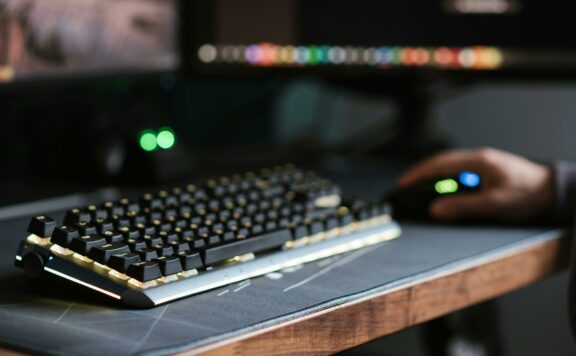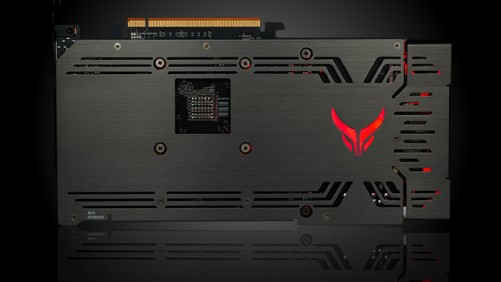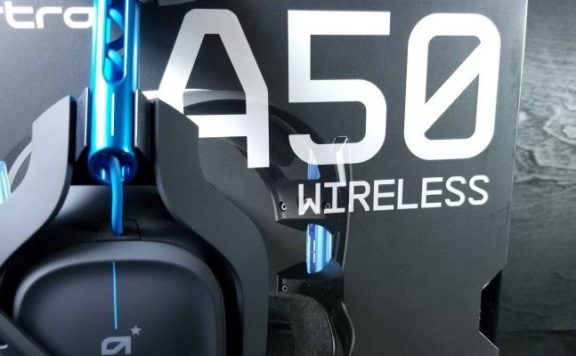The Maonocaster AMC2 Neo isn’t your regular studio podcast kit. This new one-stop audio mixer & sound card might look miniscule compared to its big budget brethren, but for under €60 or local equivalent Maono just unleashed a quite unprecedented cart of functionality on deskd. Packing in 7 hours of battery life, functional faders, a sound pad, multiple aux options, and full 48V phantom power, the Maonocaster AMC2 Neo seems like quite the compelling purchase, but will the following specs count if it sounds like trash?
Specifications:
Connectivity
Data: USB-C
Stream Out: 3.5mm Jack
Headphone: 3.5mm Jack
Aux: 3.5mm Jack / Bluetooth 4.2
Dynamic Mic Input: XLR w 49V Phantom
Audio
Frequency Response: 20Hz-20kHz
THD: THD<0.05%1kHz
Headphone Output: 20mW.3Ω (1kHZ.THD+N=1%)
Sample Rate: 48kHz /16bit
Battery
Type: Lithium 1500mAh
Battery Life: 7 Hrs
Out of the Box
Disembowelling the packing that the AMC2 Neo comes in is relatively straight forward. As you’ll see from our unboxing, this audio kit comes surrounding by the yellow and black branding that is customary for Moano devices. With just carboard and a small amount of foam packing, getting this Maonocaster out on the desk is barely a few seconds work.
Look and Feel
Putting the included cables and quick start guides to one side, our latest piece of podcasting kit from Maono looks pretty slick snuggled in its box. The black plastic housing looks solid. Buttons are chunky and well-spaced out. Yellow highlights continue the customary branding without being overbearing and the LED indicators don’t detract from the core function of the AMC2 Neo. It’s a pleasing balance of function and form that isn’t as heavy handed as Focurite’s customary red box or as downplayed as my M-Audio Air.
Getting it in hand is a little more mixed. While the buttons and dials are well spaced and easy to interact with, the entire device is almost featherweight. The chassis feels and sounds hollow inside. Sliders give a similar impression, with a bit more wiggle than I’d like, and the compact size doesn’t detract from the initial impression that this is a budget offering. Truthfully, this is a low cost deice. It comes in at around half the price of equivalents I could find with a ton more capability that I’ll cover after initial setup.
Setup
Plugging in the AMC2 Neo is delightfully straight forward. The 355-gram plastic box will slip into most gaming backdrops without too much fanfare, which is precisely the point. All the cabling plugs into the back of this box, and it’s well labelled. Aux and headphones require a standard 3.55 jack so there no adaptors needed. A Standard XLR cable goes exactly where you’d expect, and the two USB-C cables are easily identified. It’s something of a mild annoyance that one of the USB-C cables is used for power and one for data at all times. Even when the AMC2 Neo doesn’t need to be charged, it seems to need both data and power cables attached. It would also be great to have the headphone out available on the front of the chassis, but everything else is otherwise just plug and play. No separate software download is available. This feels like a missed opportunity but does help with portability when you want to port the setup to a new desk.

Function
There’s more to the this sound card than an inexpensive pre-amp and an audio interface. While there isn’t any software bundled with the device, there are lots of options under the shiny black hood. Like any decent desktop option, the AMC2 can act as an audio output and power a 48 V microphone line in. At its most basic, this provides a solid way to connect a set of headphones and a dynamic broadcast mic to your gaming stream. While I’ve added in a quick frequency response test using the same Maono mic. Comparing this card to the M-Audio Air, the response is certainly flatter across the board with the AMC2 Neo and far truer to life when using the M2 device. That said, this means you can expect a solidly consistent response that sounds very competent.


Output is s a little more difficult to demonstrate but this certainly managed to pump out enough noise. I could put my headset on the desk and continue listening to the latest game trailer if I wished. The entire soundscape did not feel quite as rich or present as I’m used to, but if you can catch this then you’re likely used to plugging in $400 headphones on a daily basis too.
The AMC2 does the job and does it adequately, providing a solid few hours of 48V to build a broadcast. And really capable reproduction. Where it starts to really impress is the extra bells and whistles. You’ll likely have noticed a row of additional rubber buttons all uniformly present across the bottom of this device. While it’s quite obvious what the faders and dials are used for, the rubber row unlocks a whole array of extra options.
Press The Red Button
Forget the traditional Aux in situated in the back of this box. Press the Bluetooth button and you’ll be able to stream audio into a Bluetooth Aux cable. That could mean connecting a smartphone to queue up interview outtakes, silly noises, or even an additional set of microphones. There’s plenty of options and this just adds a ton of flexibility. Thankfully using this is as simple as turning it on and pairing your new source. An in-ear announcement confirms when Bluetooth is turned on, off, or pairs. Too, making this surprisingly functional.
The rest of the options vary in usefulness. The reverb button adds varying layers of reverb to the XLR in, while the Pitch Presets changes the mic pitch. While these don’t stand out to me as killer features, the Noise Reduction button, Direct Monitor, and Sound pad all got regular use. Much like the Bluetooth Aux, an audio alert sounds to signal the current state of these selections. Pressing each triggers them, allowing podcasters to use a huge range of audio options without having to haul around their own software settings.
This can be massively beneficial, but only after you learn how to wrangle in all the buttons. To effectively reduce background noise or turn on 48V power to a dynamic mic doesn’t take much more than a press. Learning how to erase and reset custom sound recordings, cycle through reverb settings, and set side channel configuration all takes some time and a series of co-ordinated taps. Each require their own combination of button presses that adds an extra layer of complexity to the AMC2. Realistically, this could have been helped with a larger and better illustrated instruction manual or software. That’s all it takes, and the lack of this feels like an obvious omission.
That particular gripe, like most of my complaints about this podcasting kit, stems from one of the AMC2’s biggest benefits. Without any software to hold it back or expensive construction techniques, the Maonocaster range gets a cheap and effective solution for on the go audio mixing that just works. It takes some time to get used to, it’s small, has some idiosyncrasies that need to be worked through, but the performance and capabilities are all impressive for the price. Get past the particulars of making a lightweight portable podcast console and you’ll find a capable piece of kit that will perform pretty much anywhere. Imagine podcasting on a Chromebook, because you can with this.
The lightweight construction might not feel premium, but it also makes it incredibly portable. The inclusion of a battery charge indicator at the top of the front face, and a raised cable management underside start to hint that the design is more considered in some respects than others. 355 grams will be easy to just throw in a bag and take out on the road, while the entire device can happily handle a few hours of operation on its own.
An Impressive Compromise
The Maonocaster AMC2 Neo doesn’t have the best build quality, it’s sound capabilities are solid but not outstanding, The battery definitely comes in closer to 4 hours use in real life, and there is a definite learning curve to operation. That at said, those compromises allow a library of options, decent performance, and a price point that I still cannot quite understand. You shouldn’t be able to buy this many options for just under €60 or local equivalent. If you’re looking for a second mixer while on the go or something to start out with then you could do way worse than the AMC2 Neo.






